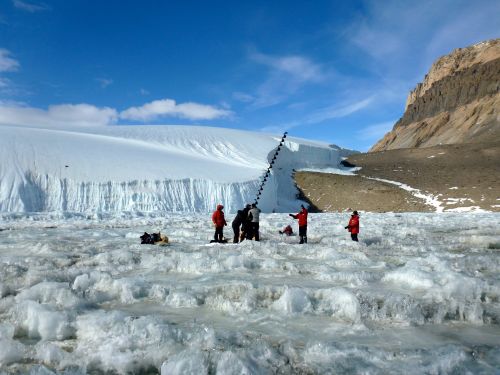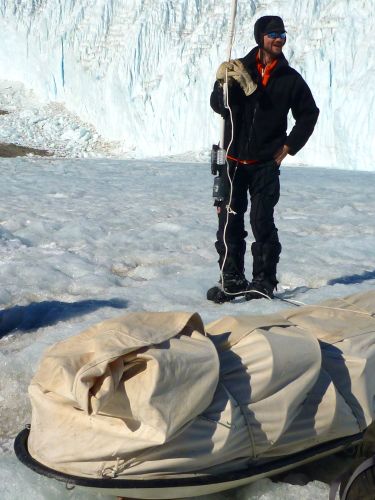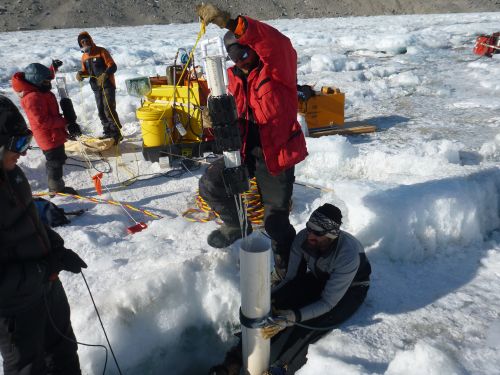Where to Place the Traps?
We have a little over two weeks left here at Lake Joyce, and we still need to deploy the sediment traps. Remember, our main goal for the field season is to learn more about way sedimentation effects the shape of the webbed, pinnacled microbial mats on the lake bottom. The traps will collect the incoming sediment for the next year until Tyler returns to pick them up and measure the results.
But a very important question that we keep coming back to is where do we place the traps? After all, we have only 8 of them, so they need to go in spots that will best answer our question.

Each time we drill a hole in the ice and lower a camera, we collect visual data that tells us at what depth the webbed pinnacles are growing. We also look at the topography surrounding the lake, noticing where there's evidence of seasonal streams that would carry sediment into the lake.

We use the data collected to help us choose the right placements for the traps. Our hypothesis is that areas with high sedimentation won't have as many webbed pinnacles. However, we need to be careful not to just place the traps only where we're likely to get data that supports our hypothesis. That would be allowing our own biases to influence our results.
We've had many discussions lately with an eye towards avoiding bias in this study, and making sure that our experiment with the sediment traps gives us results that actually answer our question rather than just demonstrate what we think will happen.
As a result, we've been leaning towards placing the traps systematically along a zone that appears to go from low sedimentation or evidence of stream flow, to an area of high stream flow, with a range in between.

Now that we have our full compliment of 7 team members here (with Anne and Ian joining us recently), we are able to have rich discussions that will eliminate biases because of the different perspectives being offered. We have many discussions in which everyone asks lots of questions, for example, "did you think about this?" or, "do we have too many variables if we change both depth AND sedimentation?" and even, "how do we define and describe what makes something a 'webbed pinnacle'"? Anne and Ian have a lot of experience with experimental design, and have especially contributed to the fruitfulness of our discussions.
All of these discussions show me that science is an interesting and thoughtful investigation. This study of Lake Joyce is very deliberate, methodical, and will add to a larger body of scientific knowledge because of the rigor of this process.


Comments